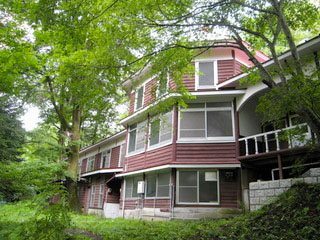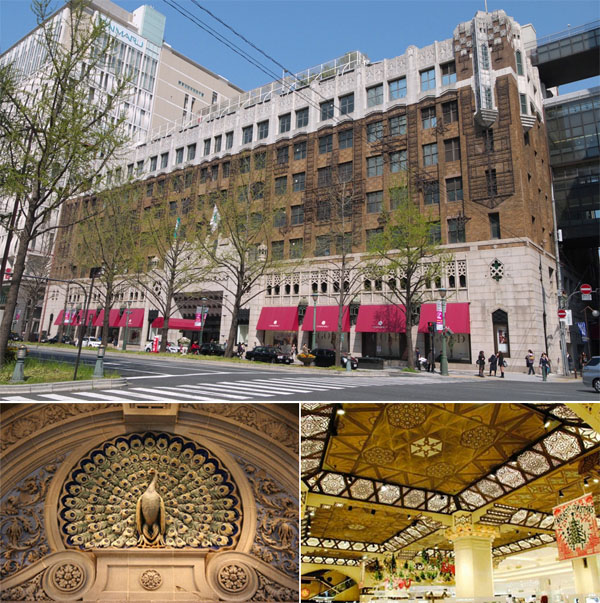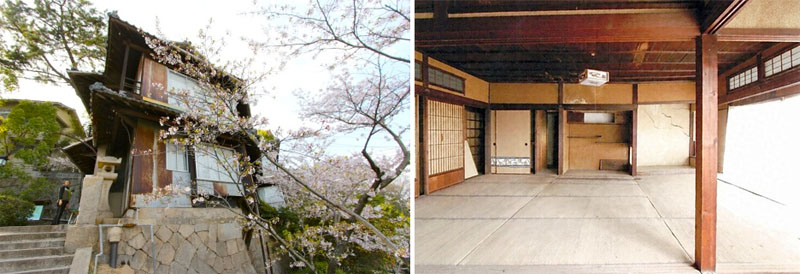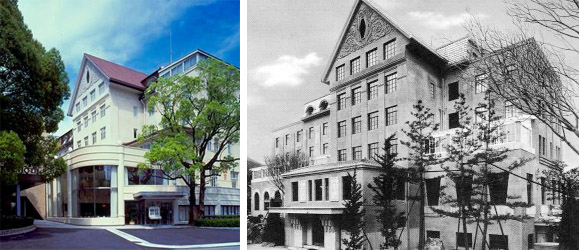Karuizawa to introduce blue plaque scheme for historic homes

In an effort to preserve the history of Karuizawa, the town will be introducing a blue plaque scheme similar to those used in the United Kingdom. The signs will be affixed to buildings and homes considered to be of historical importance to the resort town.
The town’s Board of Education has made a list of 100 important buildings, and, with the permission of the property owners, will affix plaques in the next year.
One of the shortlisted historic buildings is the Miyama-so Villa. Built in 1943 for a Japanese businessman, the house was later used as the Legation of Switzerland and was is said to be the place where a telegram was sent in 1945 declaring Japan’s acceptance of the Potsdam Declaration. The house was at risk of being demolished by a previous owner until the town acquired it in 2007 for 210 million Yen.
Two Yoshimura Junzo-designed modernist homes for sale
There are very few chances in a lifetime to buy a modernist home in Japan, and opportunities are going to become even more limited in coming years as these homes are gradually demolished by their owners. Although most are sold for land value with little to no market value placed on the structures themselves, these homes are irreplaceable.
Two homes by modernist architect Yoshimura Junzo are currently on the market in Kanagawa Prefecture (Update: Both have since sold). One is an oceanfront home just south of Hayama, and the other is a mountain-top home in Kamakura.Read more
Historic Daimaru Shinsaibashi Store Facade to be Preserved

Last year, J. Front Retailing announced plans to redevelop the historic 82-year old Daimaru Shinsaibashi Department Store in Osaka. The ageing building was becoming increasingly cost and difficult to maintain, and was short on floor space.
Original redevelopment plans involved razing the building. After J. Front’s announcement, local architects and historians lobbied the company to preserve as much of the intricately-designed building as possible. Although redevelopment is going ahead next year, J. Front are now considering preserving the historic facade.Read more
New life for old homes in Onomichi

On the hillside leading up to Senko-ji Temple in Onomichi City, Hiroshima, sits an old wooden house built between 1921 ~ 1923. Despite being registered as a national tangible cultural property in 2013, the historic home had been left empty to rot on the hillside for decades.
Luckily, a local non-profit organisation has stepped in to restore the old property and convert it into a guesthouse. Repairs will start this month, with completion expected by February 2016.
SMBC restores 89-yr old office building in Osaka

On May 19, Sumitomo Mitsui Banking Corporation (SMBC) completed the restoration of the 89-year old building that houses their Osaka head office.
The Sumitomo Building was built in 1926 as the headquarters of Sumitomo Bank. The 6-storey building was constructed by Obayashi Corporation and had a total floor area of 36,000 sqm. It was designed by architects Yutaka Hidaka, Eikichi Hasebe and Kenzo Takekoshi of Sumitomo’s construction division. Construction took five years. During construction, the greater Tokyo area was struck by the 1923 Great Kanto earthquake. As a cautionary measure, the building’s proposed floor count was reduced by one storey. A spanish-style private courtyard was built on the top storey.Read more
Historic hotel in Takarazuka to be demolished

Hankyu Hanshin Holdings plan to demolish the historic Takarazuka Hotel in Takarazuka City, Hyogo Prefecture, and will build a new hotel in a separate location nearby.
The 5-storey hotel opened in 1926. It was developed by Ichizo Kobayashi, the founder of Hankyu Railway, the Takarazuka Revue and Toho, and local industrialist Kaemon Hiratsuka. Hankyu acquired the hotel a few years after it opened.Read more
Historic 84-year old apartment building in Chuo-ku under demolition

The historic Shokin Apaato in Chuo-ku, Tokyo, is being demolished to make way for a 13-storey mixed-use office and residential building.
Shokin Apaato was built in 1931, around the same time as the Dojunkai apartments. The 5-storey, reinforced concrete building was occupied by tenants up until 2013. The owner decided to rebuild as the building does not meet earthquake-resistant standards and has become too costly to maintain.Read more
